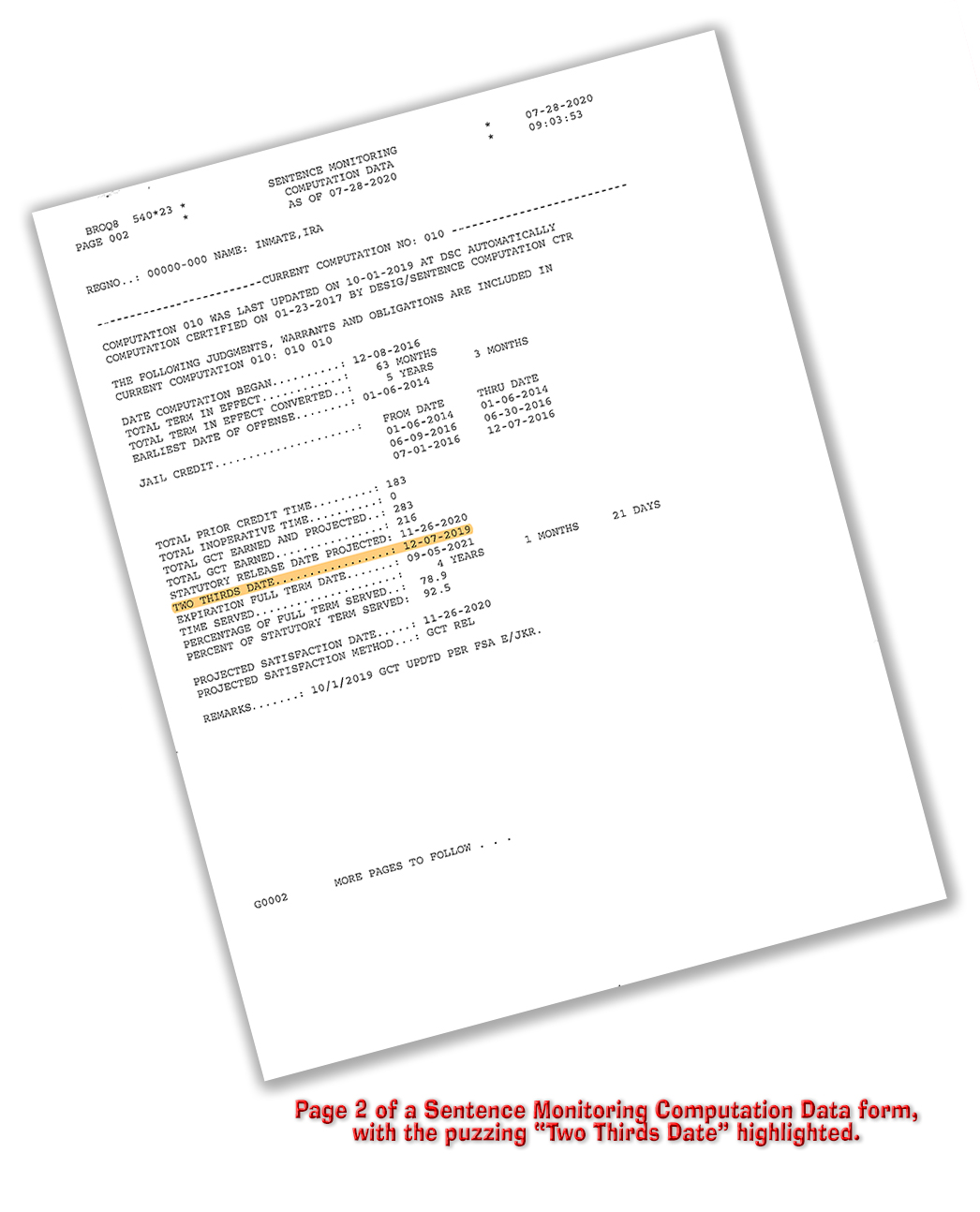We post news and comment on federal criminal justice issues, focused primarily on trial and post-conviction matters, legislative initiatives, and sentencing issues.

“TWO THIRDS” DOES NOT EQUAL 65%, AND 65% EQUALS NOTHING
I have had a lot of questions asked recently about the new line item in the Federal Bureau of Prison’s Sentencing Monitoring Computation Data form. The line lists the date on which an inmate will have completed 66.67% of his or her sentence.
 The Sentencing Monitoring Computation Data form is the calculation used by the BOP to determine when an inmate is to be released. A lot of what is on the form is a mystery, but not the two-thirds date. That date, simply enough, is used by the BOP for those 60-year old plus nonviolent inmates who may qualify for the elderly offender home detention program under 34 USC § 60541(g).
The Sentencing Monitoring Computation Data form is the calculation used by the BOP to determine when an inmate is to be released. A lot of what is on the form is a mystery, but not the two-thirds date. That date, simply enough, is used by the BOP for those 60-year old plus nonviolent inmates who may qualify for the elderly offender home detention program under 34 USC § 60541(g).
 I have had nearly as many questions about the “65% Law,” some legislative initiative that supposedly increases good conduct time from 15% of an image’s sentence to 35%.
I have had nearly as many questions about the “65% Law,” some legislative initiative that supposedly increases good conduct time from 15% of an image’s sentence to 35%.
The “two thirds” line item has nothing to do with the “65% Law.” In fact, the only things that have to do with the “65% Law” are fairies and unicorns, because they are all just as real. Which is to say, not real at all.
THERE IS NO 65% LAW. PERIOD. The HEROE Act passed by the House, as full of goodies as it is for prisoners (mandatory placement of vulnerable and 50+ people in home confinement, for example), includes no change in good time. And HEROES stands scant chance of passing the Senate.
There may be some sentencing benefits in a Senate-House compromise COVID-19 bill, as some are urging, but a change in good-time will not be one of them.
HEROES Act, HR 6800 (passed House May 25, 2020)
New York Daily News, Demand criminal justice reform in the next COVID relief bill (August 28, 2020)
– Thomas L. Root


